The country pulled millions out of poverty only recently, but about 400 million Indians are now at risk of falling deeper into destitution because of the dual onslaught of COVID-19 and economic disaster. Can they beat the odds?

MUMBAI: For months this year, while Avdhesh Chaudhary was back at home, his family went hungry most of the time, surviving on whatever they could lay their hands on.
“We ate only one meal a day. If we ate in the morning, then we wouldn’t eat at night. Or if we ate at night, then we wouldn’t eat in the morning,” recounted the 32-year-old from Uttar Pradesh state.
Facing starvation, he returned to the town on the outskirts of Mumbai where he has been working for more than a decade, 1,700km from his village.
The unemployed textile worker thought that with India’s COVID-19 lockdown being slowly eased, he would find work again. But his hopes were dashed. Just to pay rent to the friends he was living with, he had to cook for them.
“My friends sometimes would buy food for me,” he said. “There are days when I don’t get any food, so I have to rely on tea to survive.”
The pandemic has been a nightmare for him, and his world has collapsed, as it has for tens of thousands of migrant workers like him who have lost their jobs. His struggle for survival reflects a worsening situation in India.
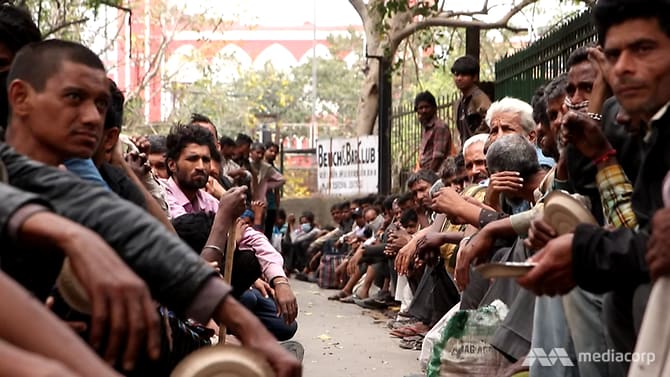
“India, along with South Asia, is right now one of the most severely affected regions and economies of the entire world,” said Amitendu Palit, senior research fellow and research lead (trade and economics) at the National University of Singapore’s Institute of South Asian Studies.
It was recently the world’s fastest growing economy, lifting 75 million people out of poverty in the last three years and 271 million people in the 10 years before that.
But poverty is still widespread; last year, 195 million people, or 14.5 per cent of the population, were malnourished, an Oxfam report said.
And the International Labour Organisation warns that about 400 million Indians — including migrant workers and daily-wage earners — are now at risk of falling deeper into poverty during the pandemic. The programme Insight takes a look at their plight.
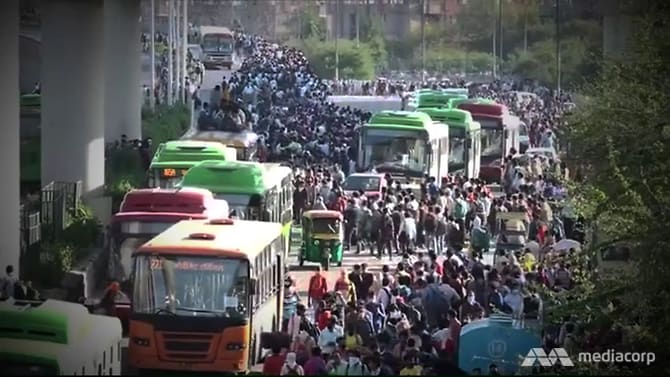
NO IMMEDIATE REVIVAL
For Chaudhary, life was full of promise not too long ago. He had earned a “good amount of money over time” working in a power loom factory in Bhiwandi, a textile hub.
After a crippling slowdown, the industry was picking up again when the lockdown was imposed in March. He stayed in the congested town for 13 days.
“The (factory) owner did give us some money,” he said. “We spent all that money on food and water.”
As his savings ran out, Chaudhary was left with no option but to journey back to his village — on foot.
“I used to walk all day and sleep at 11pm or 12pm. And I woke up at 2am or 3am and started walking again,” he said.
“I saw many people sleeping (along) the roads with mats, so even I joined them. (But) I was scared … Cars and bikes kept running on the roads. What if someone would push me or trample me?”
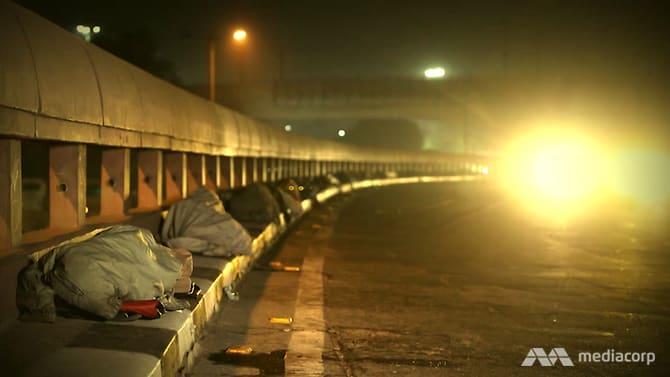
His feet got swollen from all the walking. After he took painkillers once he was home, the swelling subsided. It was about the only respite he had during the lockdown.
“There was no work in my village as well. We kept ourselves alive by selling rice, wheat and all those food grains,” he said.
We … sometimes just slept on an empty stomach. Sometimes I cooked khichdi (lentil and rice dish) for everyone. What could’ve been done other than that?
The government did distribute rations including rice, flour, spices and pulses such as lentils and chickpeas, he noted — as well as 1,000 rupees (S$18), although that lasted a matter of days for his family of four, he added.
The “massive displacement” of the migrant labour force, said Palit, was “one of the very serious outcomes” of India’s lockdown. But that was only the initial impact.
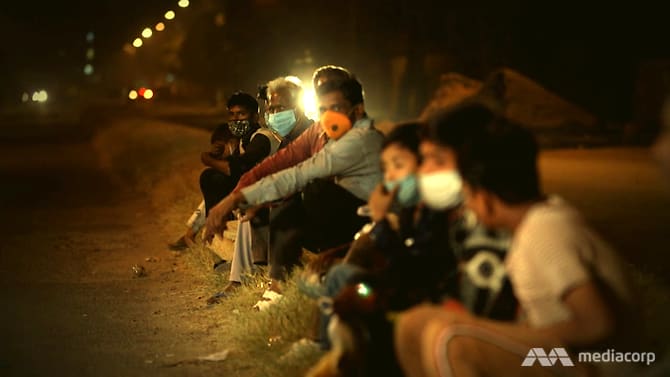
“What gradually became evident over the months and weeks that followed was that the economic contraction was deepening,” he added.
“The results were fairly widespread across various sectors of the economy … with the result that the labour market retraction has been fairly prominent. This has had an impact on both consumption demand as well as subsequent savings and investment demand.”
In Bhiwandi, for example, Shamim Ahmed’s loom machines — all 150 of them — have continued to lie idle. “I did try to (restart) one of them, but the products weren’t selling,” said the 50-year-old.
“We were hoping that after the easing of the lockdown … people would be excited to buy clothes, since everything was shut down for so long. But no one needs anything.”
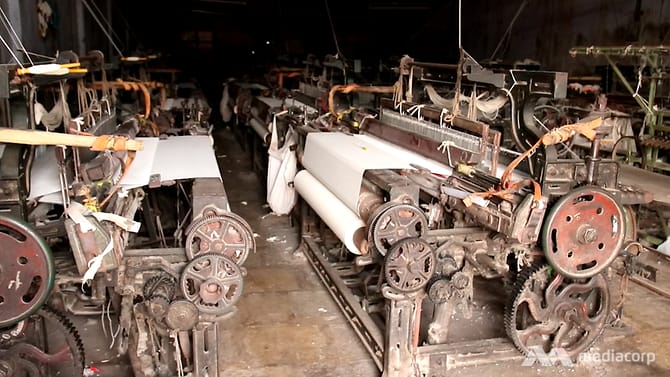
Hanging around waiting for better days is about all Chaudhary can do, especially with moneylenders often hounding him. “It feels like I’ll go insane,” he said.
Some workers have already failed to cope with the uncertainty and financial stress.
“While going back on foot to their hometown, many just gave up and committed suicide. Someone got crushed under a car, someone jumped into a lake,” he recalled, haunted by their images.
SOFT URBAN UNDERBELLY
It is a grim situation not just for migrant workers and not only in India’s small towns.
In the industrial city of Jamshedpur, home to Tata Steel, 38-year-old Shyam Thakur ran a hair salon with a regular clientele among the residents of his neighbourhood. According to his wife, S Anuradha, the salon was the family’s lifeline.
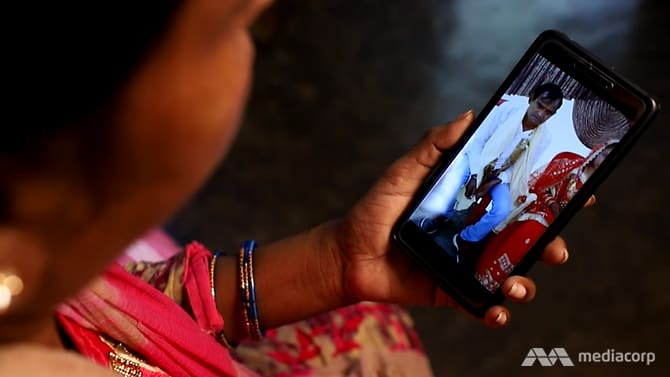
“Everything was going well,” she said. “Customers would call and come. When he was at home, he’d get calls … Sometimes he’d go to the salon at 6am.”
But when it was shut during the lockdown, his savings vanished in a matter of weeks.
With the financial struggle and unable to provide for his family as the sole breadwinner, he walked to his salon one morning and hanged himself from the ceiling fan.
“The entire burden of his family was on his shoulders, since there was no other financial support … He used to say, ‘Anu, how will we be able to manage? There’s no income,’” she recounted, breaking down.
“But I didn’t know he’d take such a drastic step. He was stressed. He used to cry. No one knows that he used to cry.”
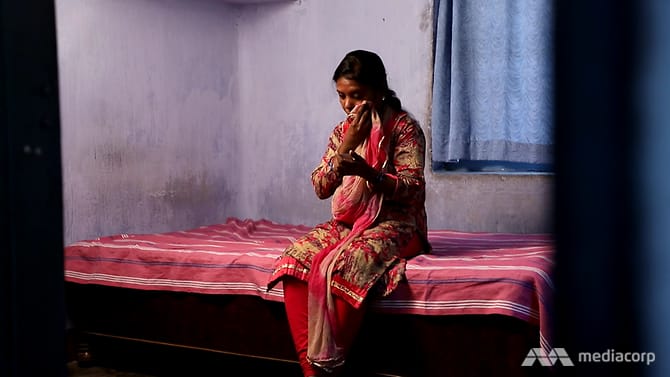
The 34-year-old widow cannot come to grips with the tragedy for now.
“I’m not able to understand anything. My mind isn’t stable, and I’m worrying about how I’ll be able to manage my future,” she said, adding that “there’s no hope” of getting support from her in-laws.
I don’t know what I should do, or death seems to be the solution. Money is the main issue. I don’t have anything.
Since the pandemic began, countless people in the cities have been deprived of their regular income for months.
In the nation’s capital, Delhi, life has become hard for domestic worker Chinta. “I used to work in five to six houses,” she said. “After the lockdown … no one’s ready to hire me.
“Everyone’s saying, because of COVID, we wouldn’t give you work.”
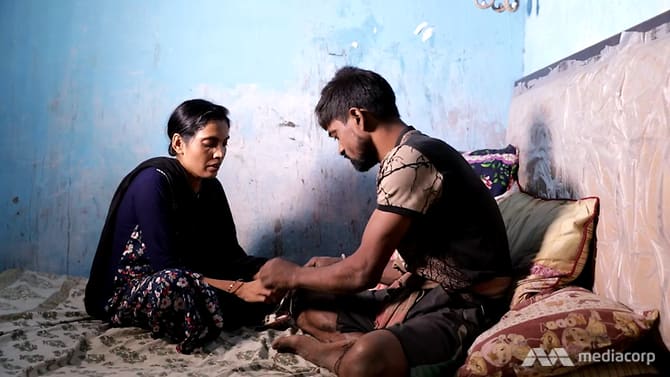
With barely enough cash to spare, she and her husband, who was not getting regular work either, were forced to embark on a week-long journey back to their village. But life in the rural areas has been no better.
“I was facing difficulties, since we didn’t have much land or any place to work. So we decided to return to the city. We also took loans from people in the village to eat,” she said.
“We need regular work so that it’ll help us to survive and (our) children to complete their studies and get educated.”
While India has struggled with hunger and poverty for decades, the pandemic has meant that “it’s not just a question of poverty deepening as an absolute feature in terms of more people becoming poor”, said Palit.
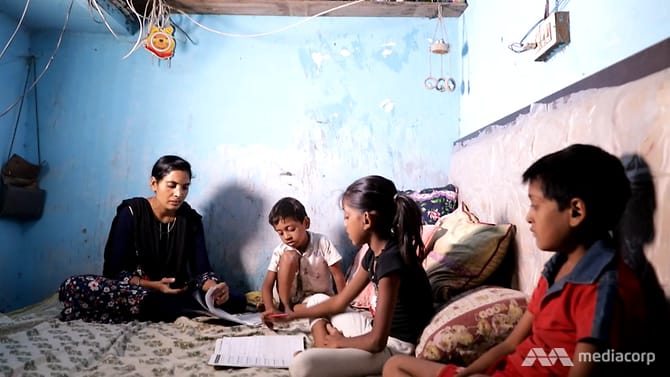
“The character of the poverty is going to undergo a change and … isn’t just going to stay confined to basic definitions, like rural poverty or urban poverty. There’s going to be a significant overlap,” he added.
“There’s going to be a spread of poverty across certain demographics because the pandemic has also produced situations where very unexpected kinds of retrenchments (and) setbacks have happened.”
SUFFER THE CHILDREN
For many poor families, the difficult situation has become even harder to bear because of the public health crisis.
In the Barpeta district of Assam, one of India’s most backward districts, one of Fulera Begum’s daughters fell ill during the lockdown. She took her to the hospital in the city but could not afford the treatment the doctors prescribed.
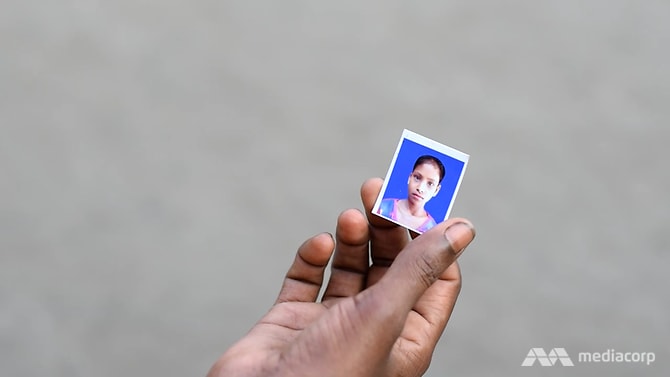
The girl’s illness became more complex after she contracted COVID-19. After a battle that stretched over months, she died recently.
“When she died, they told me that she had died of high blood pressure. Their report said she had died of COVID-19,” said Begum. “As a mother, I couldn’t take it.”
During the period the 35-year-old widow was with her sick daughter, she had to leave her two sons and other daughter at home, with no money. Villagers looked after them while she was “trapped” in hospital.
“They survived somehow … People gave them rice or cooked food,” she said. “They had one meal in the morning and wandered around all day.
“It’s said that happiness is easily forgotten, but every detail of grief is etched in the soul. I’ve not been able to buy clothes for my children or buy them anything because of the time I spent with my daughter.”
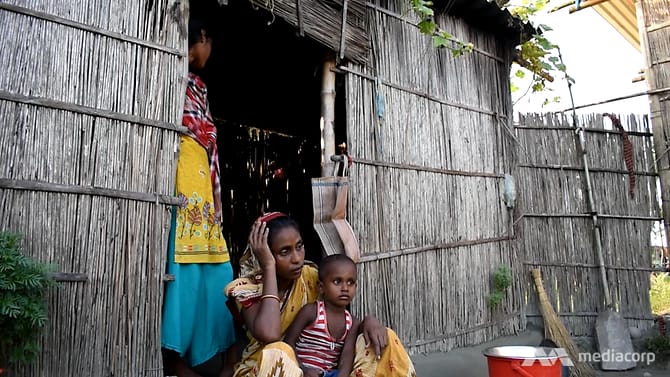
The lockdown took away her job in an eatery, the coronavirus took away her daughter, and now she hardly has money.
“Our family is sinking lower and lower. There’s no hope of recovery. If I had just 50,000 rupees, I wouldn’t have lost my daughter,” she lamented. “My greatest grief is that I had to bury her with my own hands.”
In the case of schoolboy Hafizur Rahman, the pandemic and nature wreaked havoc on his family. His father could not drive his rickshaw during the lockdown, and floods submerged their crops. “We had to go hungry,” said the 15-year-old.
READ: Struggle and suffering in India as climate change bites, but what next after ‘brutal’ floods?
Driven to desperation, he and a few others from his village in Assam went to the neighbouring state of Arunachal Pradesh to work in a stone crusher unit. What lay in store for them was a month of horror.
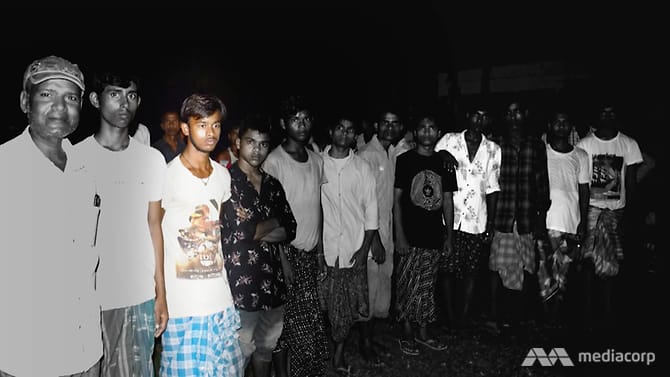
“We left at 5am to work in the quarry. I once injured my foot very badly while breaking stones,” he said.
“It rained three or four days every week. They still took us to work. We said that we’d come to work on road construction and not to break stones. They said they’d pay us 6,000 rupees for every truck we filled.”
The meals provided left the children malnourished.
“They gave us only mashed potatoes in the morning and dal (lentils) at night,” he cited. “Because we got back from work late, we couldn’t see the food we were eating. There were always insects.
“The water contained leeches and sand. We let the water sit in a bucket for half an hour and let the impurities sink … Sometimes while eating, we’d try drinking a little water and leeches would slip into our mouths.”

On some nights, he had an “unbearable” pain on the left side of his stomach. Only later did he find out that their labour contractors had sold them as modern-day slaves. And they were told they could never go home.
India’s worsening economic situation has led to an increase in trafficking, as several media reported recently. Fortunately, Hafizur and other children were rescued by activists and the state police after one of the boys managed to phone home.
LIVING ON HOPE
With families in need of financial help, Hafizur’s suffering is not going to be a rare case of misery and exploitation.
But such cases as well as the scenes of jobless workers marching across states have called into question the ability of the state machinery to deal with the dual onslaught of the pandemic and economic disaster.
WATCH: India’s COVID-19 crisis — Slavery, suicide and a rising extreme poor (49:30)
In the second quarter, the economy shrank by 23.9 per cent, the worst contraction among G20 countries. According to Sanjeev Sanyal, the government’s principal economic adviser, it “shouldn’t be surprising” that India has “taken quite a hit”.
“As we said … we were going to prioritise lives over the economy, at least in the initial phase when we were trying to work out how this pandemic was going to pan out … So we did a very severe lockdown,” he said.
“But I think what you’ll see is that we’ve worked very hard in the government to make sure that the poorest sections of society have indeed been cushioned.”
For example, the government has given free monthly rations — five kilogrammes of rice or wheat per person and one kilogramme of chickpeas per family — to 810 million people since April, cited economist and Bharatiya Janata Party national spokesperson Sanju Verma.

This month, the government announced its third stimulus package to lift the economy and alleviate the suffering of many. To date, the total stimulus announced by India is about 15 per cent of its gross domestic product.
While the government believes a rapid recovery is likely when the pandemic ends, the Global Hunger Index 2020 report released last month paints a bleak picture now, even without taking into account the impact of COVID-19 yet.
The index calculates the level of malnutrition in 107 countries and ranks India 94th, i.e. its hunger level is “serious”. Despite the government’s best efforts, families like Hafizur’s are living on the brink of starvation.
He came home with no money, and the odds are against him being able to provide for his family members. But he is unwilling to give up and sees no other option now but to study hard.
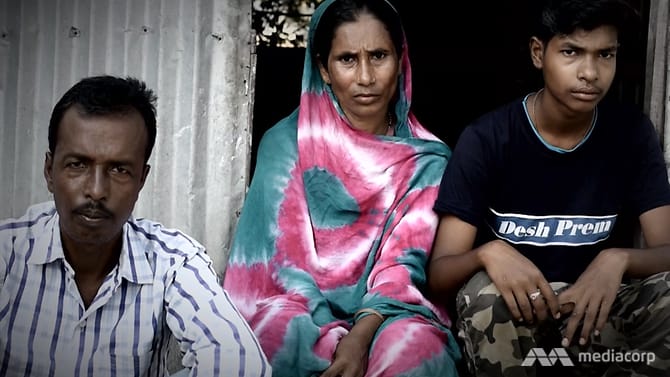
“If I get educated, I’ll have value. This is why I should study at any cost,” he said. “Even if I can’t afford food, I should study.”
Many others, like Chaudhary in Bhiwandi, are also living on hope. “If the situation improves, or maybe it becomes as good as it was back then, then it would be reassuring,” he said.
“If the situation gets better, I’ll stay, and if not, I’ll go back. My wife keeps asking me for money, but I honestly tell her that I can’t do anything. I barely earn 200 or 300 rupees here.”
Begum in Assam still has “a lot of dreams”. “I may have a small house, but my hopes aren’t small. My aim is to educate my children,” she said.
“Hopefully my sons will grow up and start their own business. Or maybe they’ll get good jobs. I have a lot of aspirations because I’ve gone through a lot of pain.”
Watch the Insight episode here. The programme airs on Thursdays at 9pm. For more on poverty in Asia, read about how poverty runs a thread through Indonesia as COVID-19 puts millions on the brink, and whether the poor in Malaysia can cope with the challenges posed by the COVID-19 pandemic.
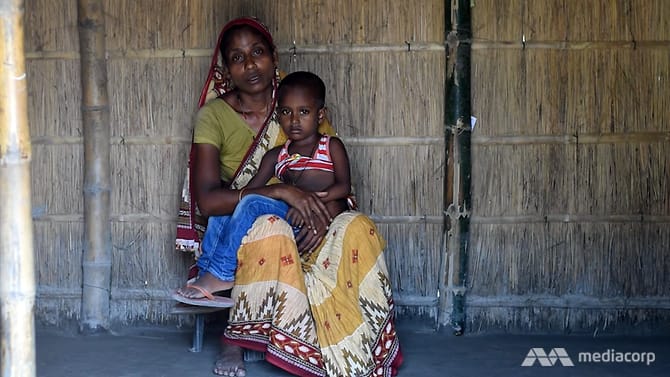
Source: CNA/dp

